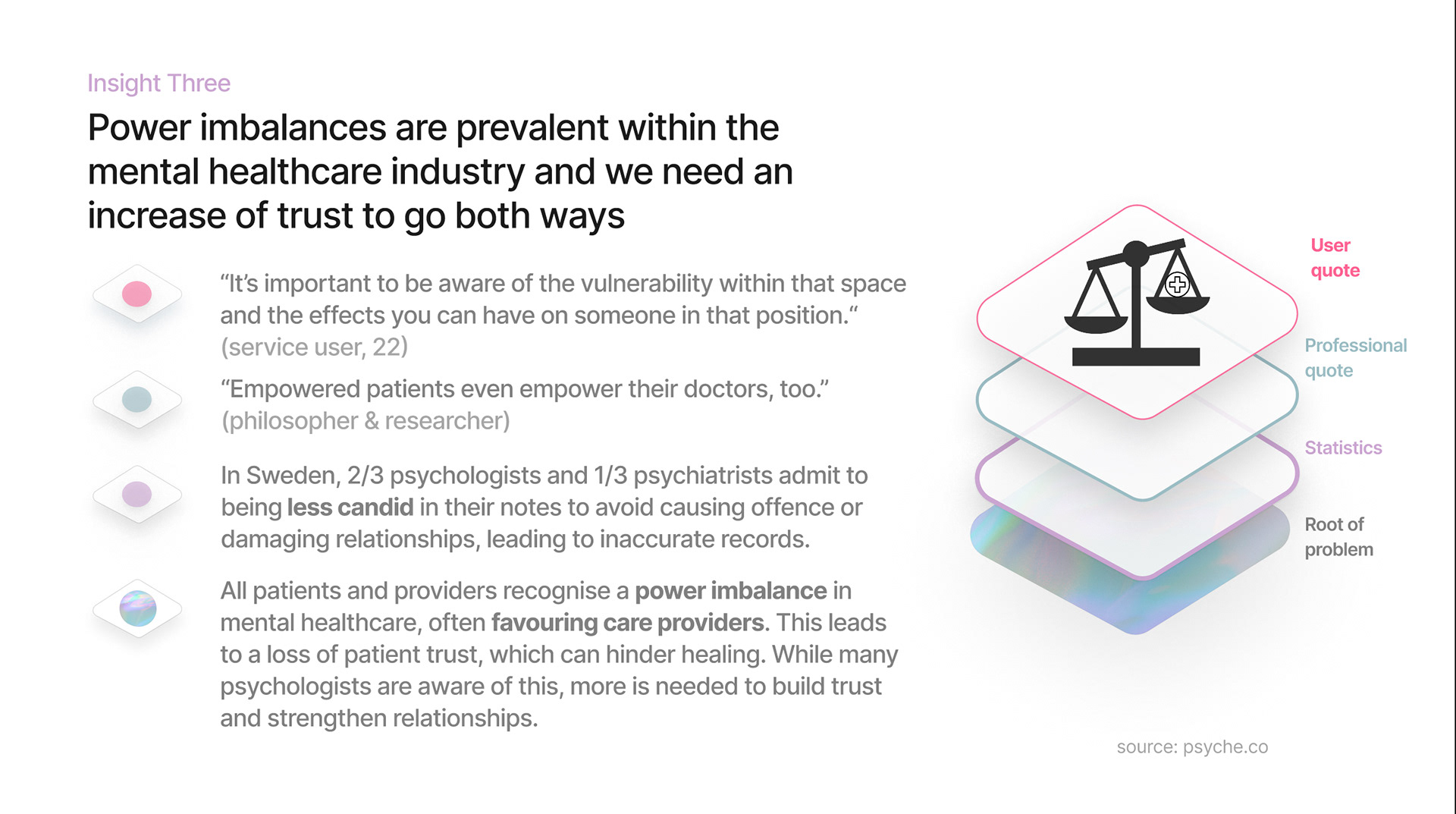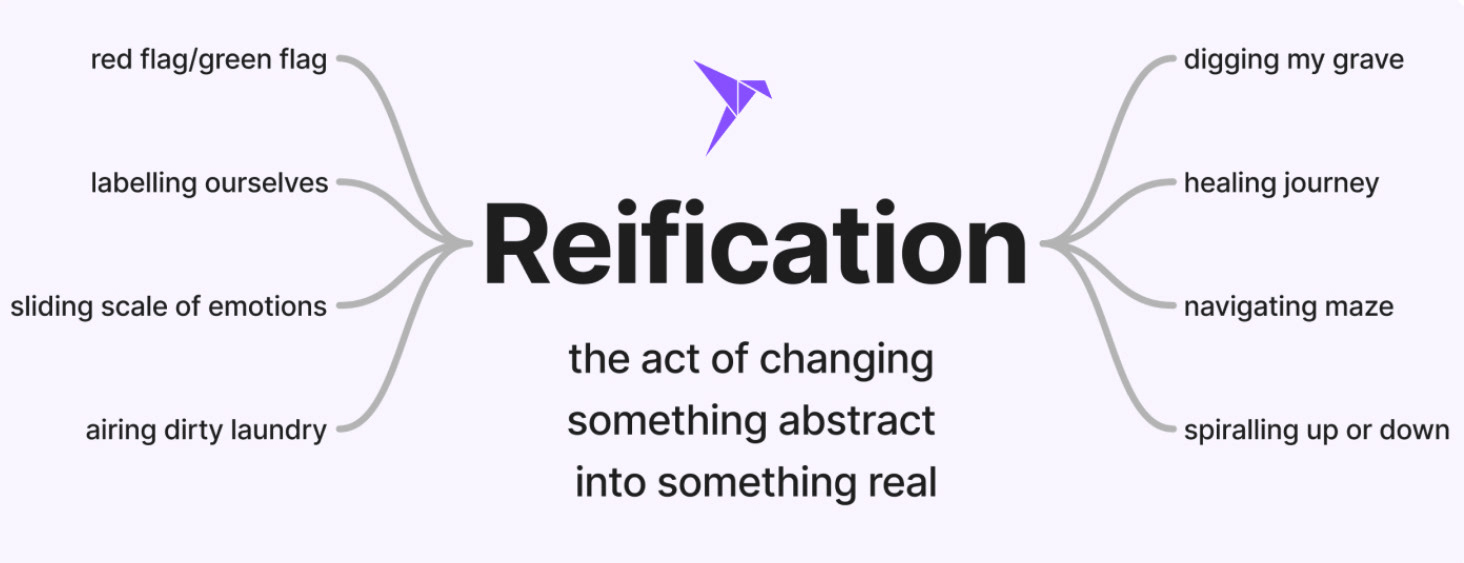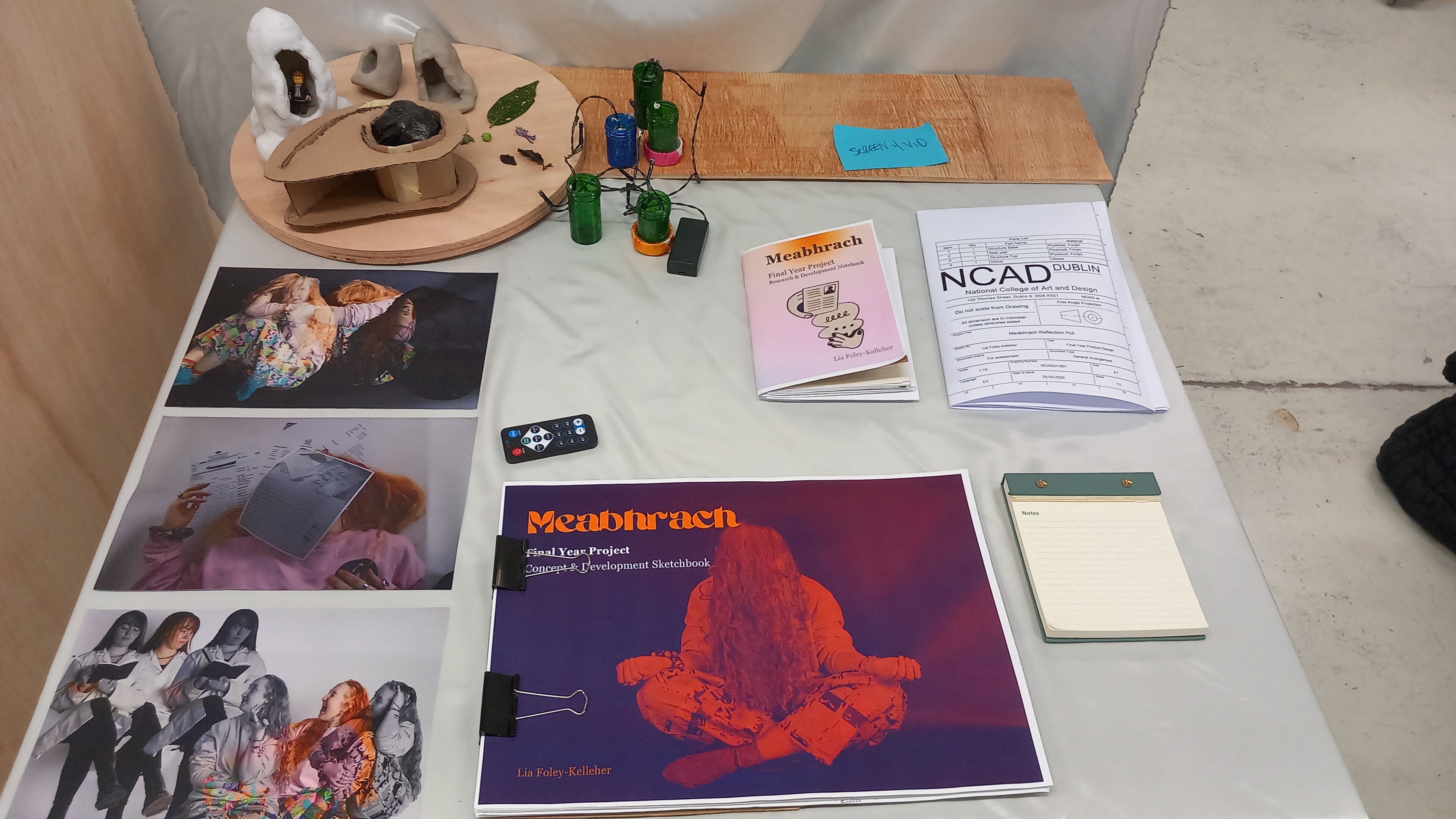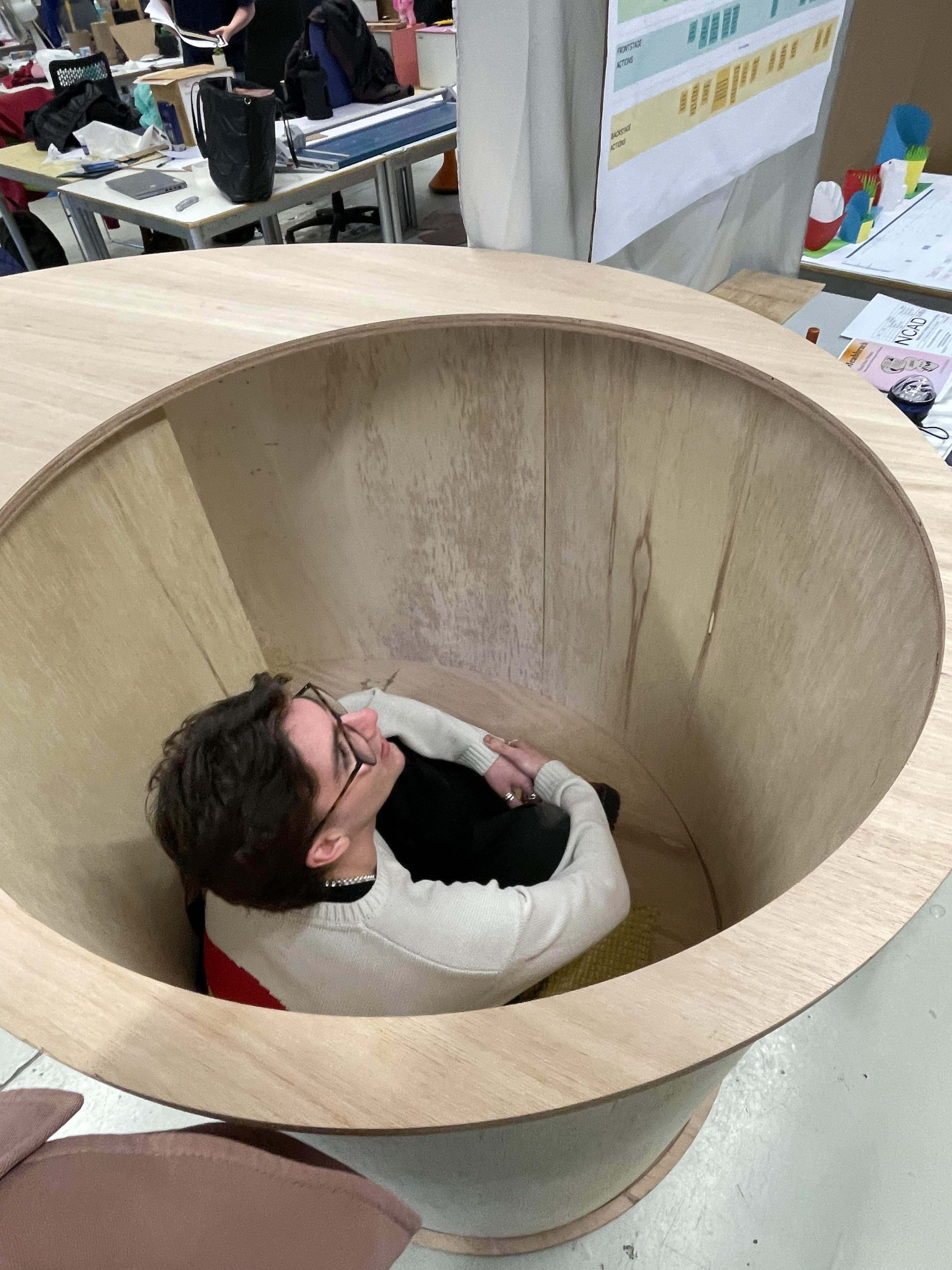Final Year Major Project
Empowering people to take control of their healing journey
(You can view a more condensed project summary here: https://2025.ncad.works/graduates/lia-foley-kelleher)
Brief
As a product designer-researcher, my aim for this project is to encourage self-reflection, healing and open conversations. Born from vulnerability, passion and lived experience, Meabhrach (Irish for 'mindful') provides a more holistic and caring environment for those who have undergone years of support for their mental health and are now seeking to access their mental healthcare records.
Research
For this project, a key part of the research involved documenting my journey to retrieving my own mental healthcare records from various services over the past decade: with this I then created two journey maps comparing my personal experiences to ideal scenarios. I also conducted a diary study from an adolescent currently in therapy and performed a market analysis of 11 services analysing the most beneficial aspects of each one from a service users perspective. 9 formal interviews were conducted, including insights from various professionals and service users in Ireland, the UK and Sweden and I conducted a survey with 48 participants. A significant amount of desk research was also completed, encompassing podcasts, articles, newspapers, websites, and videos.
To sum up the issue mental healthcare records are complicated to access, it is still quite a bureaucratic process severely lacking in empathy. While there are many benefits to accessing these records such as increased patient engagement, autonomy and collaboration, improved clarity and understanding of their journey, as well as enhanced informed decision making; many people are reluctant to go down this path due to the complicated admin process, long waits, and lack of emotional support and empathy from professionals given that patient records aren't written with patients in mind.
Key Insights & Quotes






Ideation
My aim for this project was to encourage self reflection, and part of promoting this was to practice it myself, which came naturally and inspired many ideas. With the nature of this project I felt it was ideal to approach this ideation phase in a more creative, free flowing way allowing me to adapt to new research, feedback and discoveries. However as the overall aim was to produce key concepts all with potential for expansion, I kept myself grounded by categorising my 53 ideas under three key words - Reification, Reflection and Balance.



LEGO ideation
Moodboard
Emotion Expression Photography Session
I wanted to express the frustration of feeling belittled by mental health professionals - the power imbalance, the quick prescriptions, and the lack of real empathy. The sterile white background and cool tones in the photos reflect the medicalisation of emotions, contrasted with images of me meditating to show the need for connection. One photo shows me holding notes written about me by others, raising questions like: 'Am I defined by how others see me?' My colourful clothes and multicoloured hair lighten a heavy topic and highlight the disconnect between how I look and how I feel. Though not a typical step in my process, this shoot felt necessary and I’m glad I did it.















Experience Prototyping
Combining over 50 ideas into strings of exploration to test with a variety of people was really fun and informative, allowing me to conduct further research, user testing and concepting in a creative, innovative & enjoyable way.
Concepts
For this project, my overall goal was to inspire conversation and reflection - even if it's in a controversial way! My three key concepts - pulled from a combination of 53 ideas and observations from the prototyping/testing/creating sessions as well as user interviews and surveys - I feel definitely achieved this!
I ultimately decided to pursue the concept 'Auralis' for development. The concepting phase was really insightful and grounding—it helped me reconnect with the project’s purpose and user feedback. Creating a design spec and pitching the idea clarified my vision for the final outcome. Visiting “sensory-friendly” spaces also shaped my direction—many felt too loud, restrictive, and lacking privacy, which showed me what *not* to do. That experience reinforced the importance of co-designing with users to create something truly supportive and inclusive. This has been such a fulfilling process, and every time I sit in the prototype or see others engage with it, I’m reminded how meaningful and exciting this project really is.
Development
For this project, I expanded the 'Auralis' concept above and reviewed all my research and user findings and crafted a design spec to develop the concept to its best potential. Which became 'Meabhrach' (Irish for 'mindful') - a physical reflection hut and accompanying service for people to reflect on their mental health journey in an empathetic way.






Service Description
Meabhrach is a trauma-informed service that reimagines how individuals access and reflect on their mental healthcare records. Designed for those with counselling or psychotherapy experience, it acknowledges that medical notes are often written without the patient in mind and can be distressing to read. Meabhrach provides a safe, supportive alternative through a private, sensory-friendly reflection hut located in a guidance or recovery centre. The space uses calming lighting, sound, aroma, and natural textures to promote emotional regulation and comfort. Trained guides with lived experience are available to offer compassionate support throughout. Inspired by principles of alternative therapies - where mindset, setting, and support are key. Meabhrach helps users approach this experience with care and calm. Through considered design and research into sensory impact, the service encourages self-reflection, dignity, and healing.
simplified user journey (service blueprint on request)
user empathy map
user storyboard
Supporting website
Upon hearing about Meabhrach, users can check out our website (mock up below) for more information about our guides, the service provided and to book an appointment.
Physical Reflection Hut
I began with 2D sketches and iterative large cardboard models to test the form and gather feedback. Translating this into a 3D model was challenging, but exciting as this was my first large scale model. Once the form and 3D designs were finalised, I researched materials and chose Lumin hardwood plywood for its strength, tone, and sustainability. I used a CNC machine to cut the base and top, then fitted flexible plywood sheets into slots to form the curved walls. The dome was shaped in foam and finished with plaster—more complex than expected, but worth it. The final structure is sustainable and modular, made of five components that slot together tool-free and remain sturdy and stable.
7 iterations - physical prototytpes feedback





Outcome
The final physical outcome is a beautifully, sustainable, thoughtfully built reflection space furnished with comforting finishes for a personalised sensory friendly finish! I had this on display for my NCAD Graduate Show and the response was amazing! This project has received so much praise and appreciation from a wide range of people - service users, mental health professionals, educators, children, parents, everyone! - for which I am eternally grateful for after putting my heart and soul into such a personal project.
inside - phi (golden ratio)
in situ render
inside the customisable space
